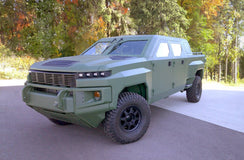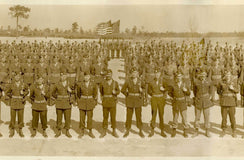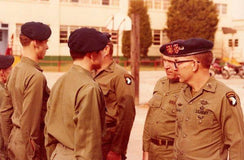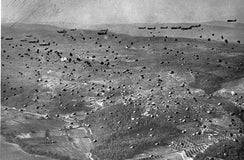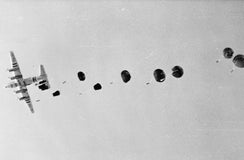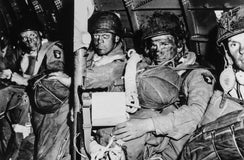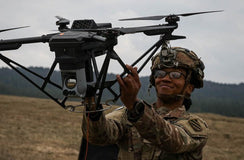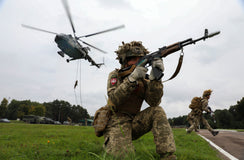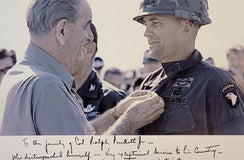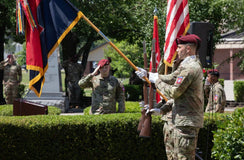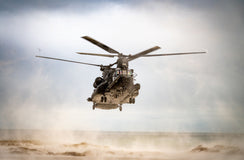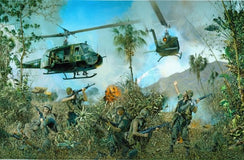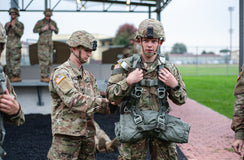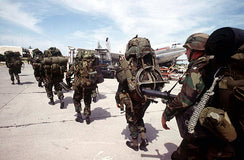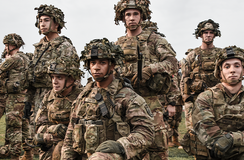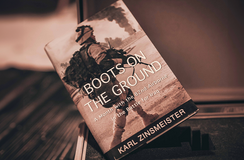"We’re the 82nd Airborne and that’s the way we do it. We like it that way.”
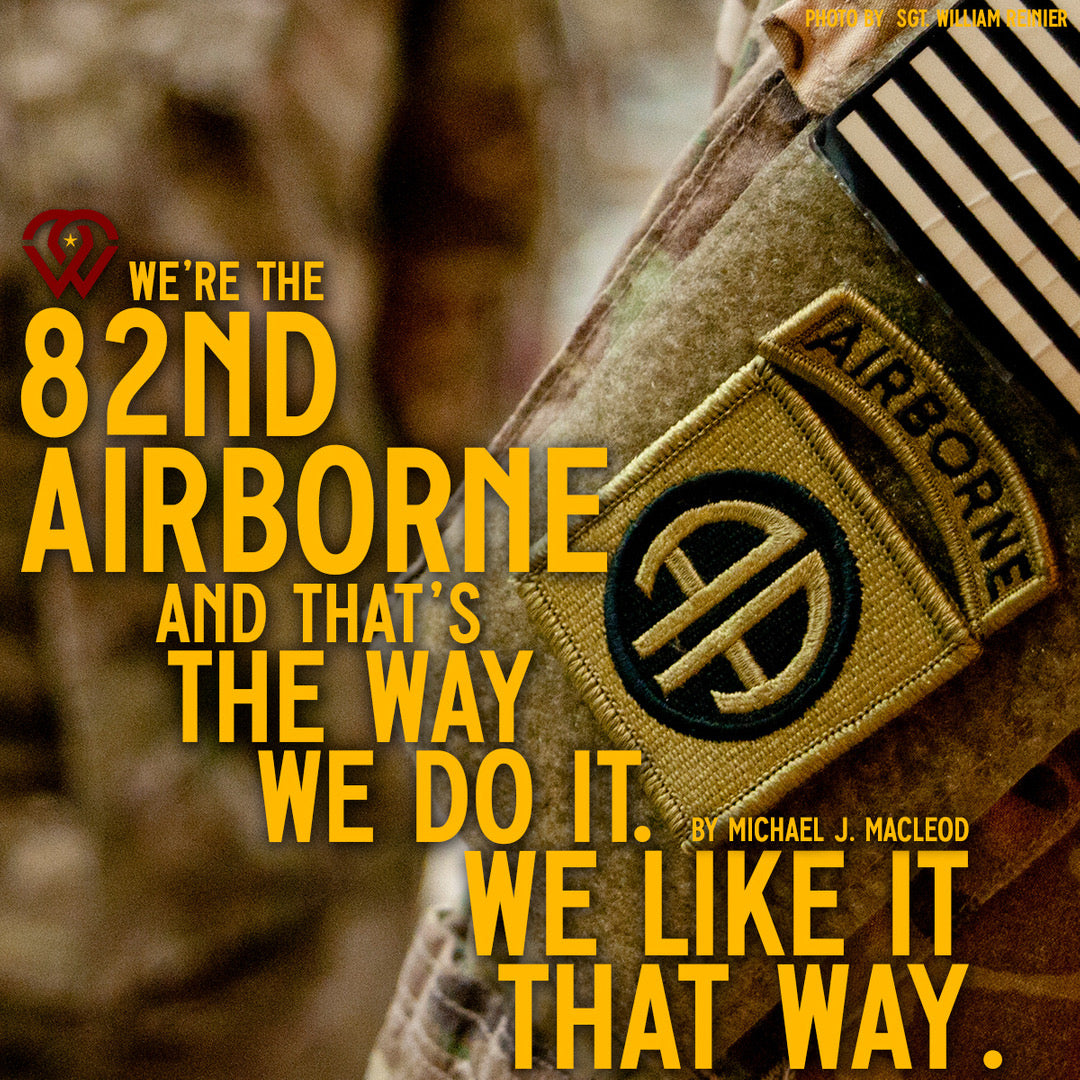
“There’s a lot of things you’re going to see here that are a little messed up or a little different. Don’t try to change it. We’re the 82nd Airborne and that’s the way we do it. We like it that way.”
–An officer at a newcomer’s brief, Hall of Heroes, 2011
The 82nd Airborne Division. Had the late Stephen Ambrose never written the book Band of Brothers, the 82nd might still be the most well-known airborne division in the world. In fact, it’s the only one left in America’s army.
In the fall of 1942, the World War I era 82nd Infantry Division was reactivated as the 82nd Airborne Division at Camp Claiborne, Louisiana. The following day, the troops mustered in a large field. Everyone to one side would remain in the 82nd. Everyone on the other side would become part of the newly formed 101st Airborne Division. Together, the two divisions would make history with the largest combat airborne operations the world would ever know.
All this was new to me as I stepped off the bus onto sun-bleached and cracked Ardennes Street in Fort Bragg, North Carolina. Ardennes, as in Ardennes Forest, pronounced with the S because we’re in America, not France, and pronouncing it the French way would only make a soldier stick out.
“You sound like a varnished turd, specialist,” a staff sergeant scolded me when I said it wrong.
“Ardennes,” I repeated, this time with an S.
“Airfuckingborne!” he replied.
At the north end of Ardennes beyond rows of lofty longleaf pines lay Pope Army Airfield. From Pope come the rumbling Hercules C-130 propeller-driven paratroop planes that streak the blue skies daily over Ardennes, the red thumping artery of the 82nd Airborne Division. The growl of those four turbine engines already evoked in me visceral machinations of stand up, hook up, shuffle to the door, the sudden rush, the prop blast, and green silk snapping overhead.
Jump school seemed the natural entrance to this place. From north to south, Ardennes was riven with 82nd history: Graves, Waal, Mederet, and Messina Streets; La Fiere Loop; Bastogne, Salerno, and Sicily Drives—all World War II references. There was York Theatre and Pike Field, named for a courageous sergeant and lieutenant colonel who fought in World War I; Deglopper Street, Towle Stadium, and Funk Gym, for two heroic privates and a first sergeant who fought in World War II, all five, Medal of Honor awardees. One of the more endearing qualities of military culture is how courage and self-sacrifice are held above all else, even rank. Because those qualities are in greatest demand on the battlefield, and because the battlefield is mostly filled with privates and young sergeants, they are most likely to be awarded for valor. Generals salute Medal of Honor awardees, even privates.
As I watched a crowd of young paratroopers in gilded dress uniforms, canted maroon berets, and glinting black jump boots pour from York Theater, it occurred to me that the only combat veterans I had ever seen were wrinkled vestiges of the 1940s or pony-tailed ‘Nam vets. These men were something altogether different. They walked like weaponized energy. They were vital, jovial, and strong, leaving from some ceremonial gathering in twos and threes. It was easy to imagine them as colorized versions of their black-and-white forebears rigging up on Upottery Airfield for the invasion of Europe.
Anyone can be born beautiful, smart, well-heeled, or even lucky, but very few—less than one percent—will step out of the pursuit of the American Dream to defend the American Dream. Far fewer – something like six percent of all active duty soldiers at any given time – live the life of a U.S. Army paratrooper. As the saying goes, you’re not special because you’re a paratrooper; you’re a paratrooper because you’re special.
Like Special Forces special?
Or like, “Well, ain’t he special?”
General Matthew B. Ridgway, commander of the 82ndAirborne Division during the invasion of Sicily and the Normandy jumps during World War II, once remarked, "Man is the most dangerous predator on Earth. It is bred in his bones. He has had to fight for a living since time immemorial, and he always will. That’s human nature and it’s not going to change."
Argue if you must about the utility of mass-tac airborne operations in 2019 (can’t we just take an air-conditioned Uber?) but going to war surrounded by men and women who you know are committed in every way to winning with overwhelming violence of action still makes visceral sense to a special few. Nobody can un-exit from an airborne C130, they know. Nobody except maybe a towed jumper or two.
Airborne, all the way.
SGT MAC
Note about the Author: Michael J. MacLeod is a former US Army paratrooper who served with the 82nd Airborne Division from 2008-2013 as a combat correspondent. He is one of the most published military journalists of the last decade and has won dozens of journalism awards including the Army’s 2012 Military Journalist of the Year. For his work during deployment, MacLeod was awarded the Bronze Star Medal, an award normally reserved for soldiers of much higher rank.

